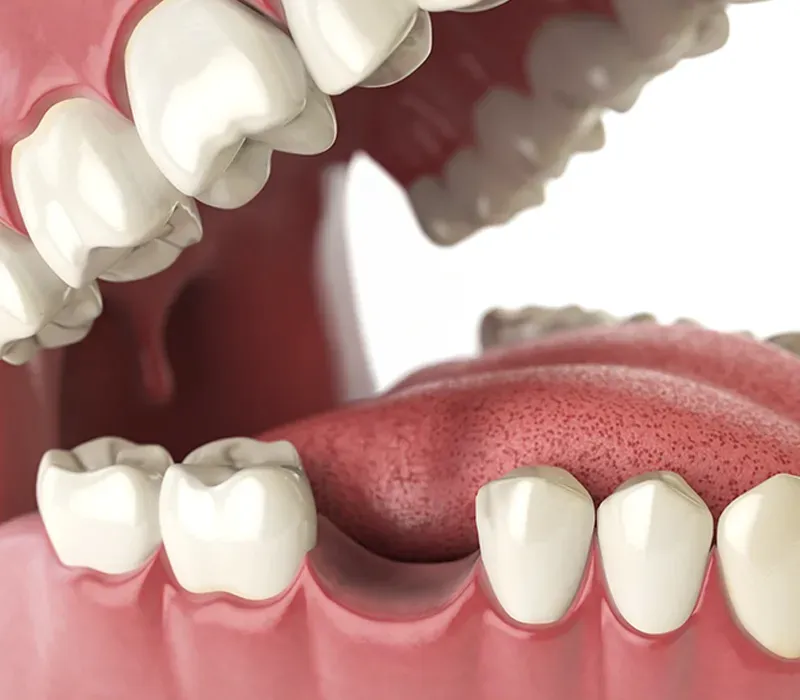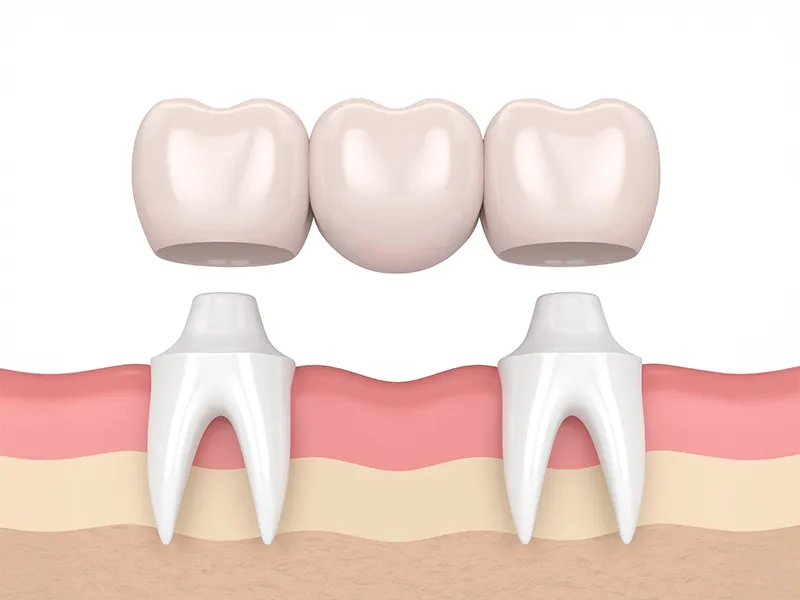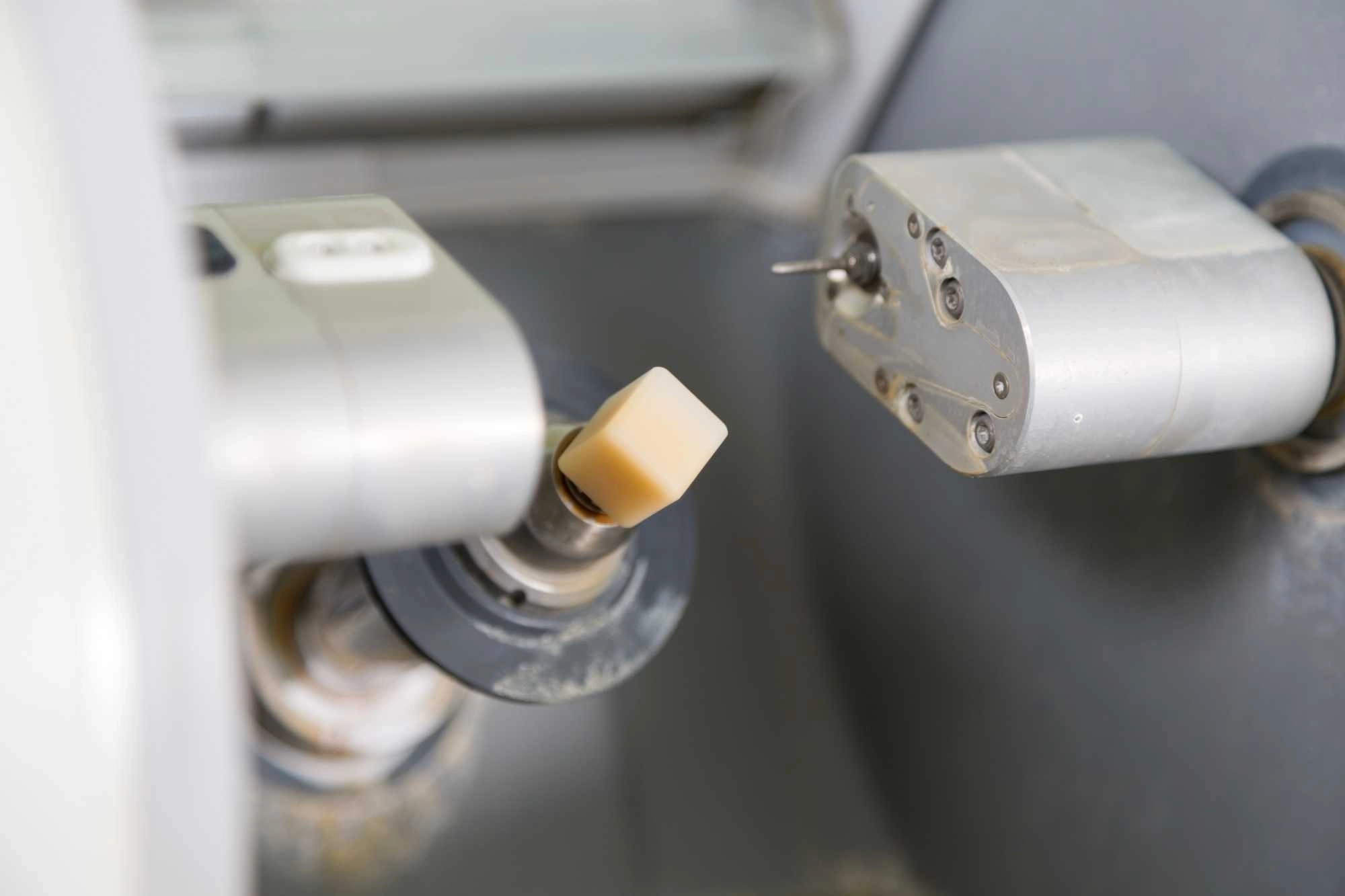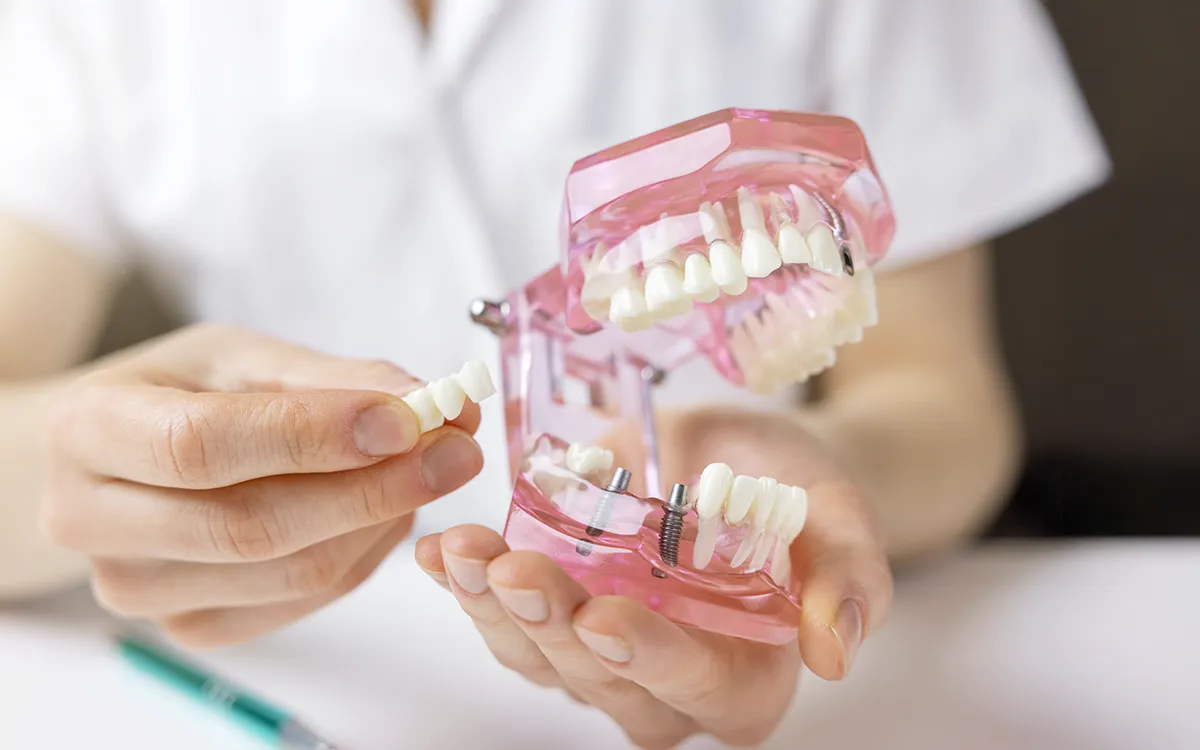Dental Bridges
Natural and functional smile restoration for missing teeth.

Dental Bridges
Natural and functional smile restoration for missing teeth.
Dental bridges for stunning smile restoration
Imagine a missing piece of a puzzle which disrupts the entire picture. Our eyes get drawn to the gap, and we miss the incredible beauty of the rest of the scene. That’s what missing teeth can do to your smile and confidence. Thankfully, dental bridges offer an incredible solution, seamlessly filling those gaps and restoring your smile’s dazzling completeness. Not only do bridges enhance your appearance, but they also empower you to chew, speak, and laugh freely, just as you did before. Whether you’re looking to regain confidence or protect your oral health, understanding the ins and outs of dental bridges can help you make an informed choice.


What are dental bridges?

A dental bridge is a custom-made prosthesis designed to replace one or more missing teeth, effectively restoring your smile’s appearance and functionality. The “bridge” comprises artificial teeth, known as pontics, supported by abutments, which can be your natural teeth or dental implants. By literally “bridging the gap” left by missing teeth, dental bridges not only enhance the aesthetics of your smile but also improve overall oral health and function.
Same-day dental bridges
At Simply Teeth, we offer same-day dental bridges using advanced CEREC technology—delivering a fast, seamless solution for replacing missing teeth. To ensure the best outcome, we begin with a thorough assessment to determine if CEREC is the right option for your unique dental needs. If suitable, we can design, craft, and place your custom dental bridge in just one visit—no messy impressions, temporary restorations, or multiple appointments required. The result is a strong, natural-looking bridge that restores comfort, function, and confidence to your smile—all in a single day.

Why consider a dental bridge?
Have you seen the meme in which someone is missing a tooth—and an entire eyebrow—yet viewers instinctively fixate on the gap in the smile, with no spare attention to notice the absent eyebrow? Dental bridges can’t help with missing eyebrows, but they do work wonders for your smile, especially improving your oral health. Reliable and versatile, they’re an excellent choice for:

- Smile better: Dental bridges blend seamlessly with your natural teeth, giving you a confident, radiant smile.
- Speak and eat better: By filling in the gaps, bridges restore your ability to chew comfortably and speak clearly.
- Keep neighbouring teeth aligned: Space left by missing teeth can cause neighbouring teeth to shift, leading to misalignment. A bridge helps maintain proper spacing.
- Stay youthful in your facial structure: Missing teeth can cause facial muscles to sag over time, altering your appearance. A dental bridge supports these muscles, preserving your natural facial shape.
- Save your jaw joint health and improve your bite: Missing teeth can affect your bite, causing uneven pressure on your jaw. This imbalance may lead to strain on the temporomandibular joint (TMJ), potentially causing discomfort, clicking sounds, or even more severe jaw problems. A dental bridge helps restore bite balance, reducing the risk of TMJ-related issues and ensuring a more comfortable, functional jaw.
Types of dental bridges
Dental bridges come in 4 main types, each tailored to meet specific dental needs and conditions. Here’s a detailed look at the options:
Types of dental bridges
Dental bridges come in 4 main types, each tailored to meet specific dental needs and conditions. Here’s a detailed look at the options:

Traditional dental bridge
The traditional dental bridge is the most commonly used type. It consists of one or more artificial teeth (pontics) held in place by dental crowns cemented onto the adjacent natural teeth (abutment teeth). This option is ideal when there are healthy teeth on both sides of the gap to provide the necessary support.
Cantilever dental bridge
A cantilever dental bridge is used when only one natural tooth is available next to the missing tooth gap. In this design, the pontic is supported by a single abutment tooth, making it suitable for areas with minimal chewing pressure, such as the front teeth.
Maryland bonded bridge (Resin-bonded bridge)
This bridge uses a metal or porcelain framework that is bonded to the back of the adjacent teeth instead of using crowns. It’s a more conservative option because it requires minimal alteration of the supporting teeth. However, it is less durable and may not be ideal for areas with high bite pressure.
Implant-supported bridge
An implant-supported bridge is anchored by dental implants instead of natural teeth. This option is particularly strong and long-lasting, making it an excellent choice for patients with multiple missing teeth. Implants provide a stable foundation and help preserve the jawbone by stimulating bone growth.
What to expect
The process of getting a dental bridge typically involves multiple steps and appointments:
What to expect
The process of getting a dental bridge typically involves multiple steps and appointments:
1. Initial consultation:
During your first visit, the dentist conducts a comprehensive oral examination, takes X-rays, and discusses the best type of dental bridge for your needs based on the location of the missing teeth, the health of surrounding teeth, and your overall oral health.
2. Preparing the supports for a dental bridge
- For a traditional or cantilever bridge, the natural teeth on either side of the missing tooth (abutment teeth) need to be reshaped. This means the dentist carefully prepares the enamel so that crowns can be placed over them to hold the bridge securely.
- For an implant-supported bridge, small titanium posts (implants) are surgically placed into the jawbone where the missing teeth were. These implants need time to heal and fuse with the bone, creating a strong and stable base for the bridge.
3. Impressions and temporary bridge:
Advanced digital impressions using intraoral scanners or physical impressions are taken to create a precise model of your teeth. This model is used to design your custom bridge. While waiting for the permanent bridge to be fabricated, a temporary bridge is placed to protect the prepared area and ensure comfort.
4. Placement of the permanent bridge:
Once the permanent bridge is ready, your dentist will fit it, check for proper alignment and comfort, and cement it in place. For implant-supported bridges, the bridge is secured to the implants with screws or cement.
Caring for your dental bridge
Proper care is crucial to ensure the longevity of your dental bridge. Follow these tips for maintenance:
Caring for your dental bridge
Proper care is crucial to ensure the longevity of your dental bridge. Follow these tips for maintenance:
Practice good oral hygiene: Brush twice a day and floss daily, especially around the bridge and abutment teeth. Use a floss threader or interdental brush for better access.
Avoid hard foods: Limit sticky or hard foods that could damage your bridge.
Regular dental checkups: Visit your dentist for routine cleanings and examinations to ensure your bridge remains in good condition.
Use a fluoride toothpaste: Strengthen the teeth supporting your bridge to prevent decay.

Who can get a dental bridge?
A dental bridge may be suitable if you:
Who can get a dental bridge?
A dental bridge may be suitable if you:

- Have one or more missing teeth.
- Have healthy teeth or implants to support the bridge.
- Want a non-removable solution for tooth replacement.
Your dentist will perform a thorough evaluation, including an oral examination and imaging, to determine if a dental bridge is the best choice based on your specific needs and overall oral health.
Advantages of dental bridges
Dental bridges remain a trusted and versatile solution for replacing missing teeth, offering several benefits:
Advantages of dental bridges
Dental bridges remain a trusted and versatile solution for replacing missing teeth, offering several benefits:
- Fast results: Traditional dental bridges can often be completed in just two or three visits, making them a convenient option for restoring your smile quickly.
- Cost-effective: Compared to alternatives like dental implants, bridges are generally more affordable while still providing excellent functionality and aesthetics.
- Customisable appearance: Modern dental bridges are meticulously designed to blend seamlessly with your natural teeth in colour, shape, and size, ensuring a natural and confident smile.
- Improved quality of life: By restoring the ability to chew and speak properly, dental bridges can significantly enhance your daily comfort and confidence.
With proper care, dental bridges are a reliable and long-lasting solution for many patients seeking to restore their smiles and maintain their oral health.

How do dental bridges compare to other options?
You may find dental bridges are suitable for replacing your missing teeth, but you should also be aware of your other options. Depending on your needs, dentures and dental implants may also be suitable, with each offering distinct benefits:
- Dentures: A removable option suitable for replacing multiple missing teeth. While more affordable upfront, dentures may require periodic adjustments and may not provide the same stability as bridges or implants.
- Dental implants: Considered the most durable and long-lasting solution, implants replace teeth individually and stimulate the jawbone. They can be more expensive and require a longer healing period but offer superior functionality and a natural feel.
Your dentist will evaluate your oral health, lifestyle, and preferences to recommend the best tooth replacement option for you.
How do dental bridges compare to other options?
You may find dental bridges are suitable for replacing your missing teeth, but you should also be aware of your other options. Depending on your needs, dentures and dental implants may also be suitable, with each offering distinct benefits:
- Dentures: A removable option suitable for replacing multiple missing teeth. While more affordable upfront, dentures may require periodic adjustments and may not provide the same stability as bridges or implants.
- Dental implants: Considered the most durable and long-lasting solution, implants replace teeth individually and stimulate the jawbone. They can be more expensive and require a longer healing period but offer superior functionality and a natural feel.
Your dentist will evaluate your oral health, lifestyle, and preferences to recommend the best tooth replacement option for you.

How long do dental bridges last?
The lifespan of dental bridges typically ranges from 5 to 15 years. However, this is highly individualised and influenced by various factors.
How long do dental bridges last?
The lifespan of dental bridges typically ranges from 5 to 15 years. However, this is highly individualised and influenced by various factors.

- Proper oral hygiene practices, such as consistent brushing and flossing, are crucial for maintaining the bridge and surrounding teeth.
- Avoiding harmful habits like teeth grinding or excessive pressure on the bridge can significantly extend its longevity.
- Regular dental checkups allow for early detection and treatment of potential issues, further contributing to the bridge’s durability.
With diligent care, many patients can enjoy the benefits of a dental bridge for over a decade.
Cross the bridge to a brighter smile
Dental bridges do more than just fill the gaps in your smile—they help you reclaim your confidence, comfort, and quality of life. From restoring your ability to eat and speak with ease to preventing future oral health issues, dental bridges are your pathway to a stronger, healthier smile.
Book your smile consult with our skilled dentists now
Don’t let missing teeth hold you back—take the first step towards a healthier, more radiant smile. Simply Teeth is here to help you find the perfect dental bridge solution for your needs. Book your consultation today to explore your options for renewed confidence, better oral health, and a smile worth showing off!
Book your smile consult with our skilled dentists now
Don’t let missing teeth hold you back—take the first step towards a healthier, more radiant smile. Simply Teeth is here to help you find the perfect dental bridge solution for your needs. Book your consultation today to explore your options for renewed confidence, better oral health, and a smile worth showing off!

